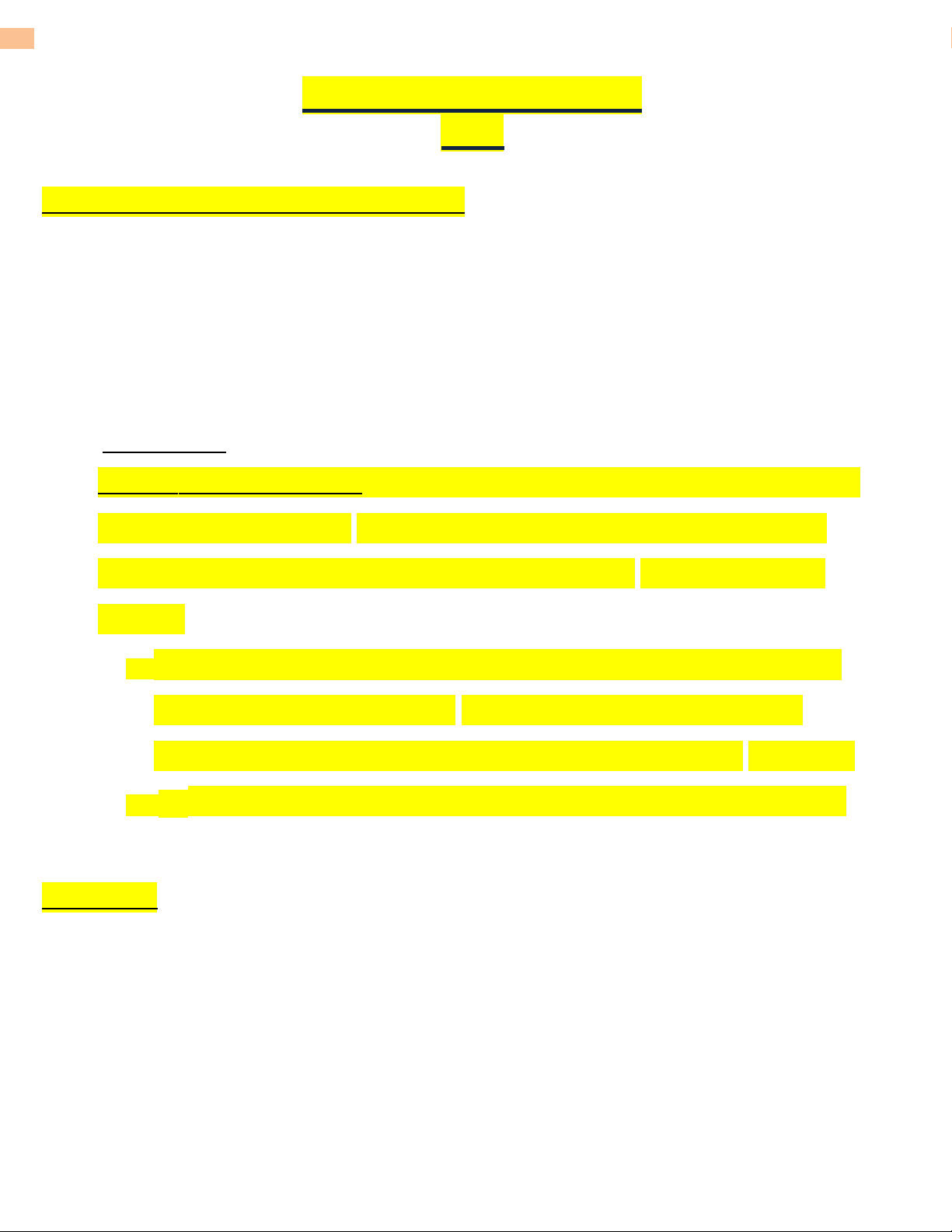
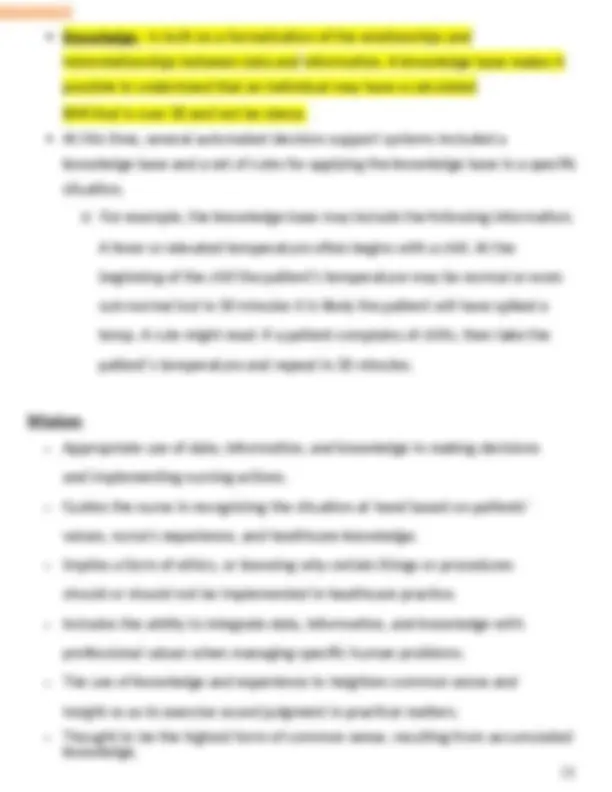
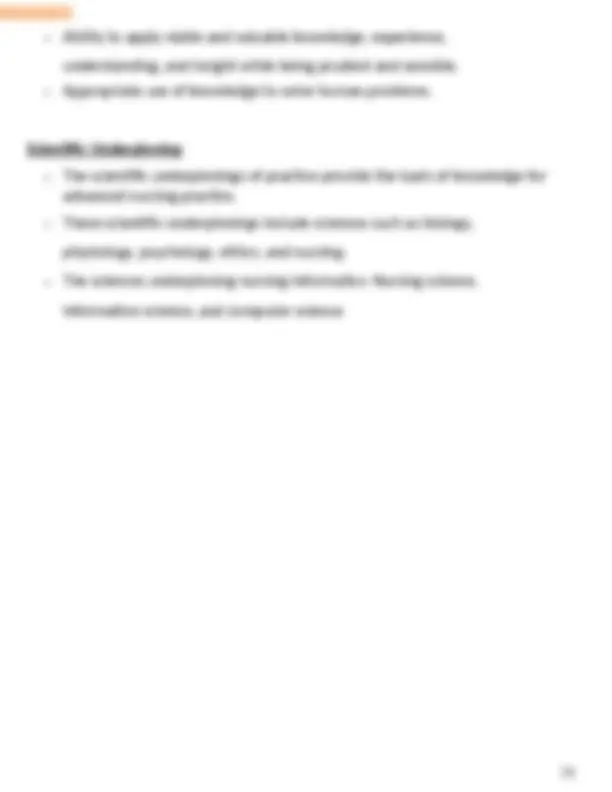
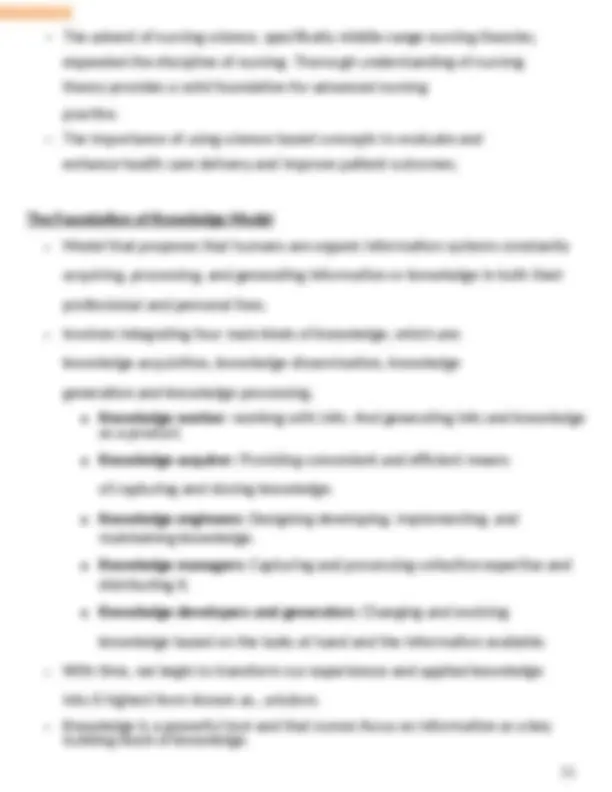
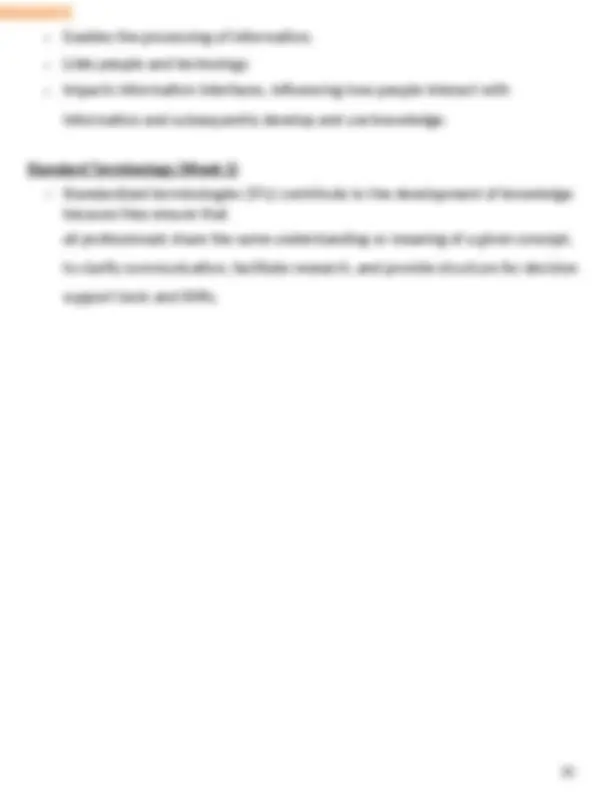
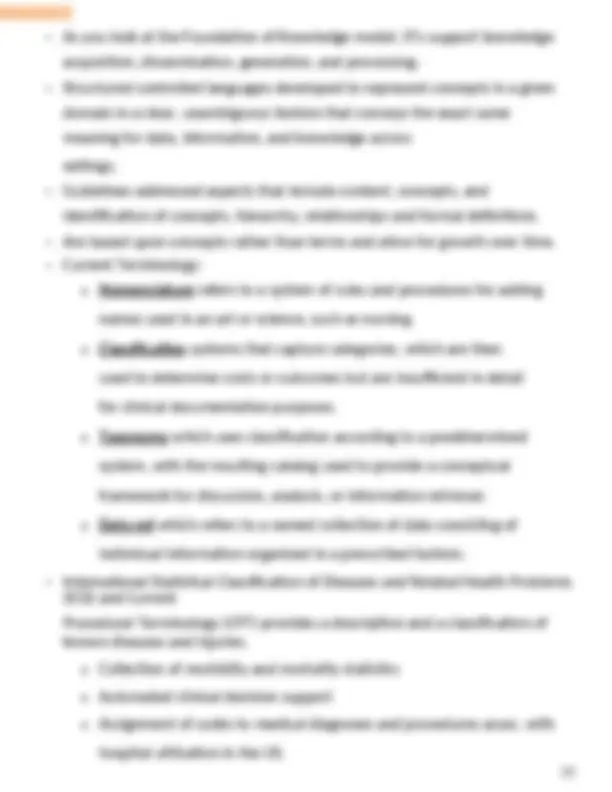
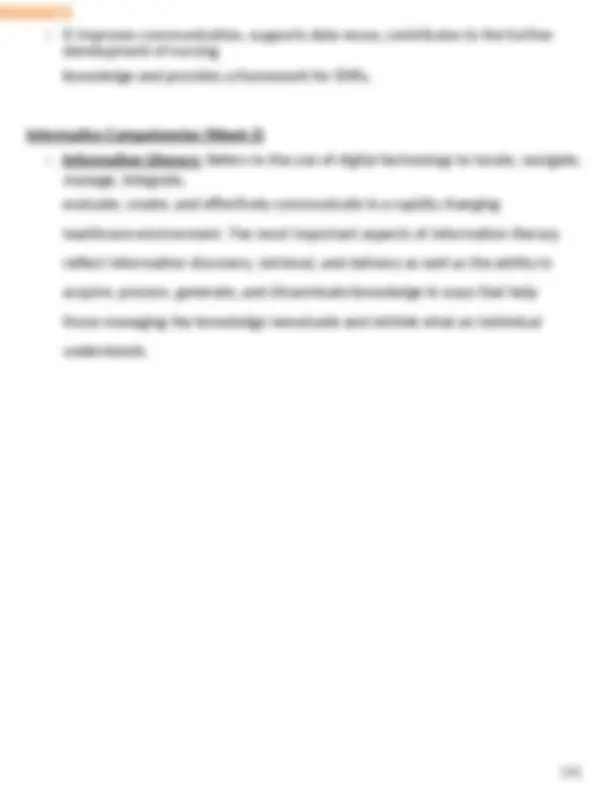
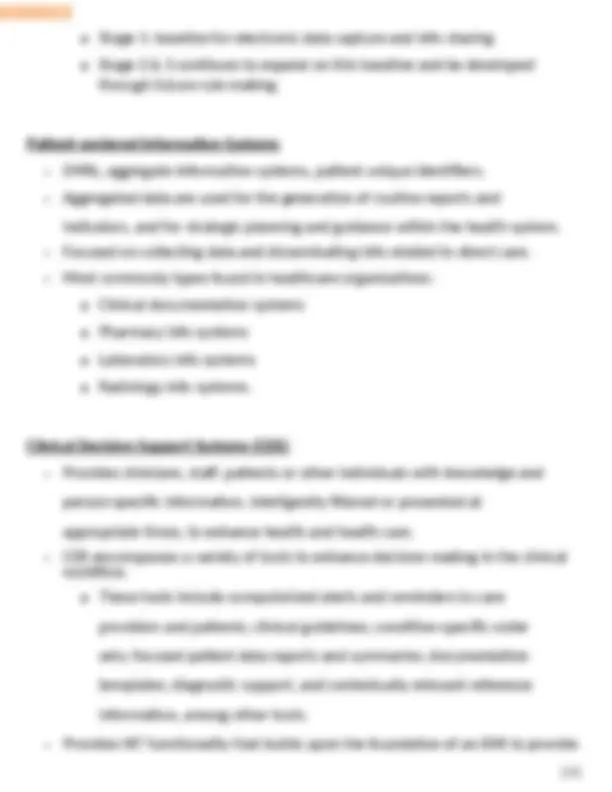
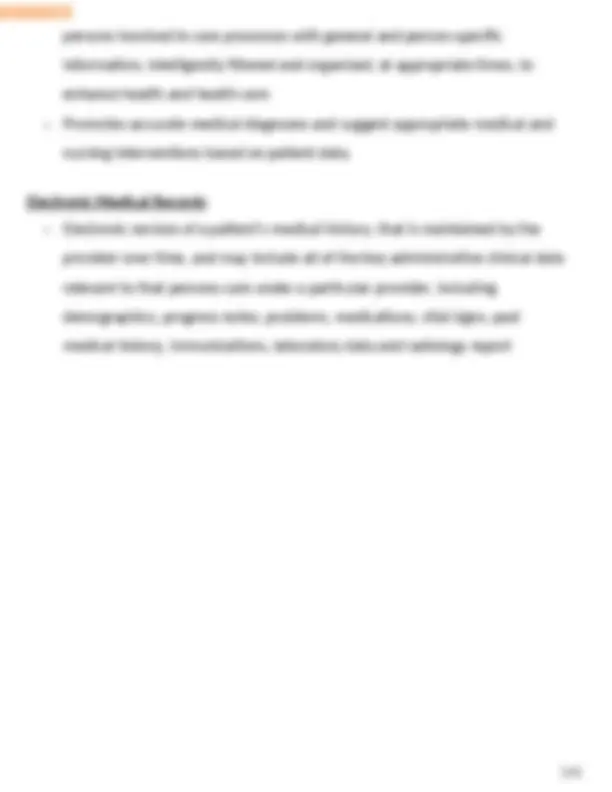
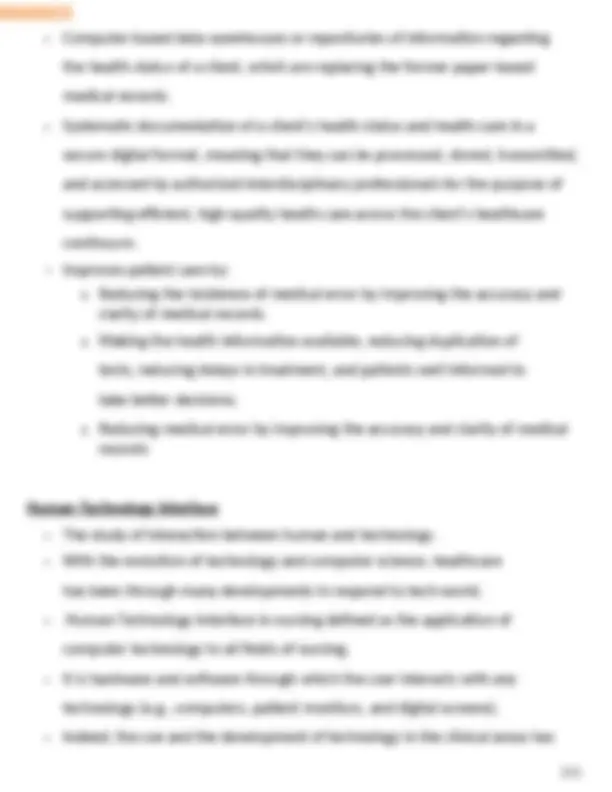
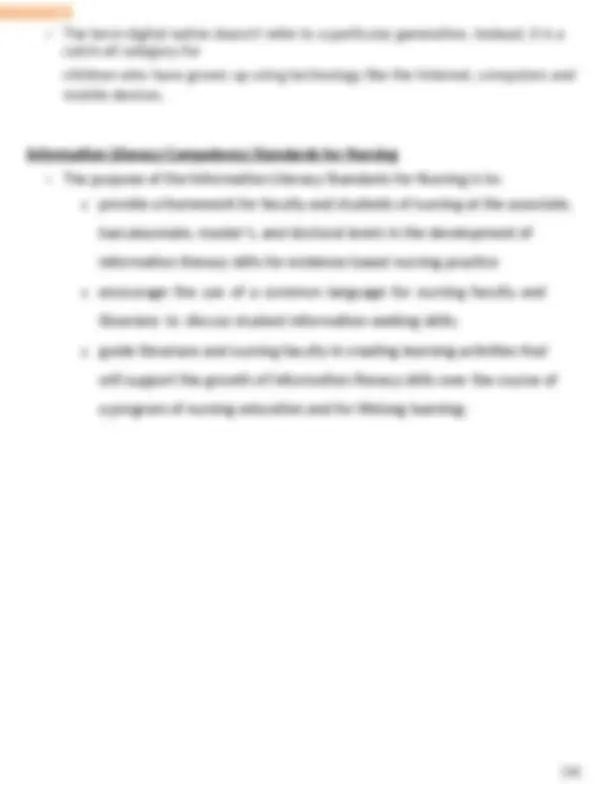
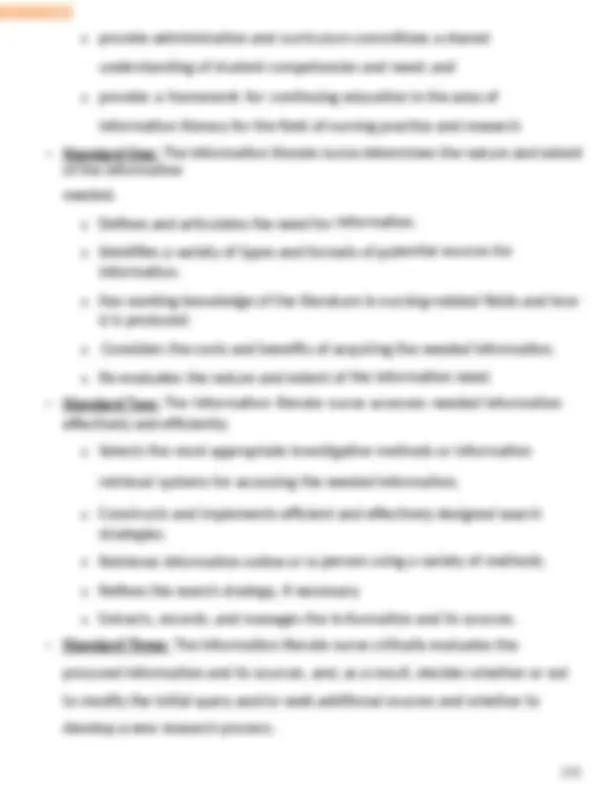
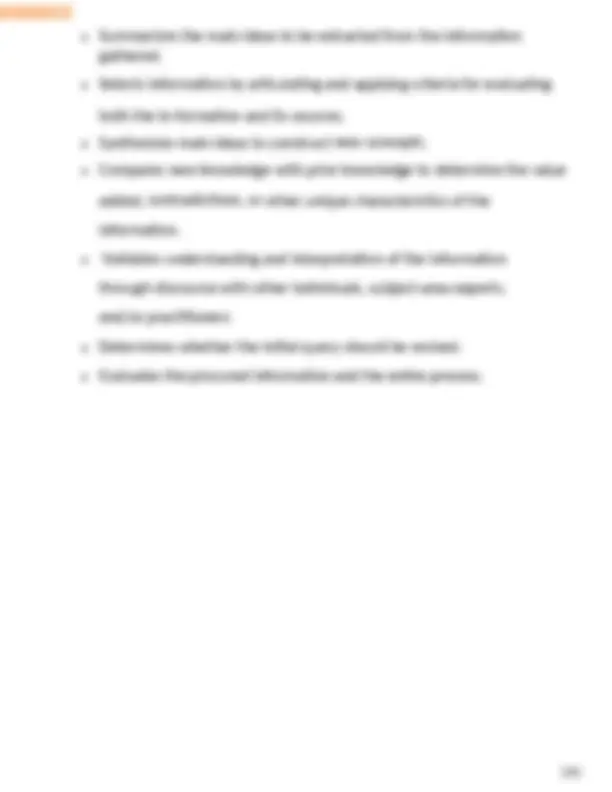
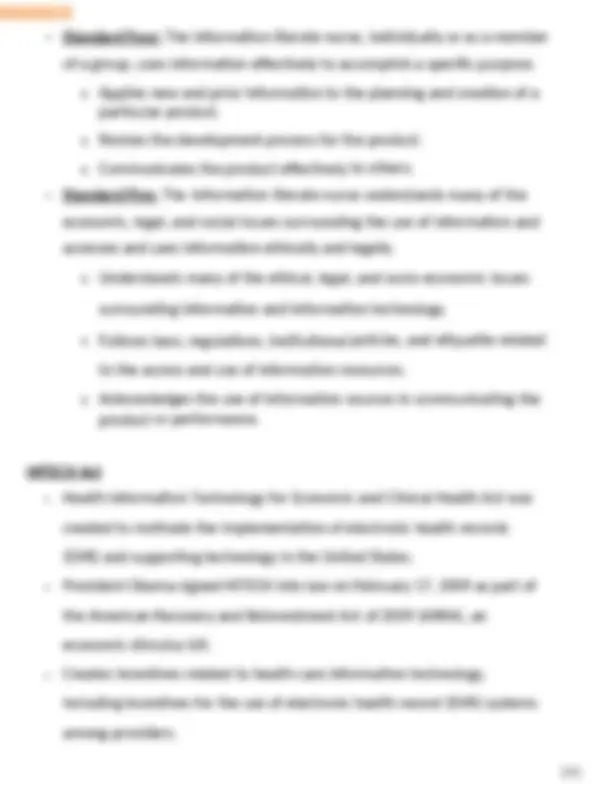
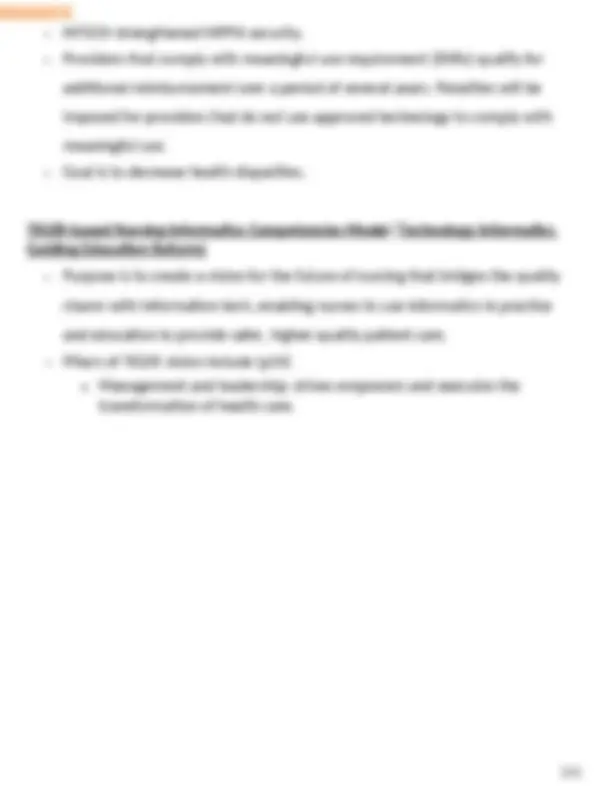

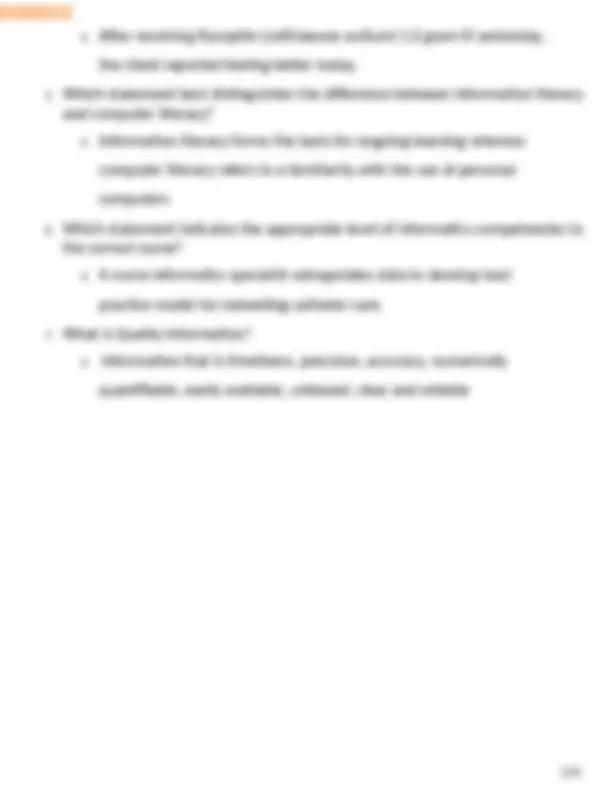
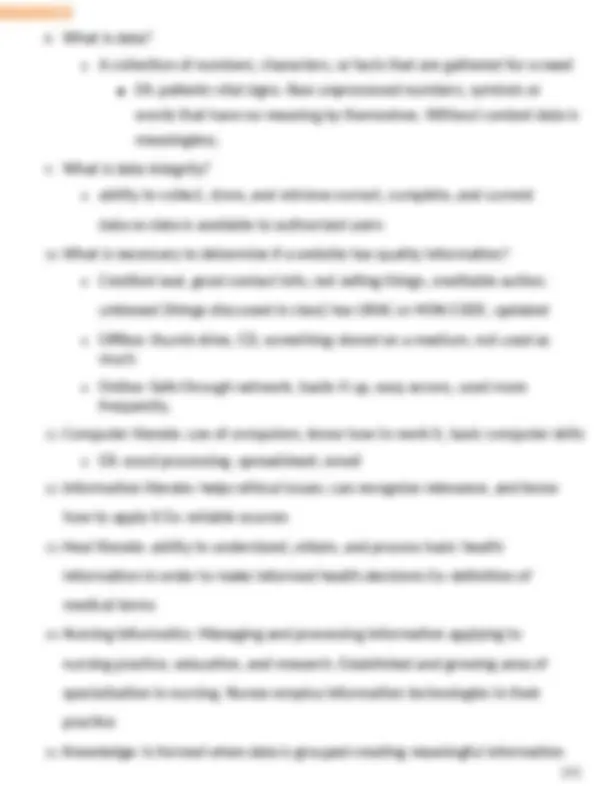
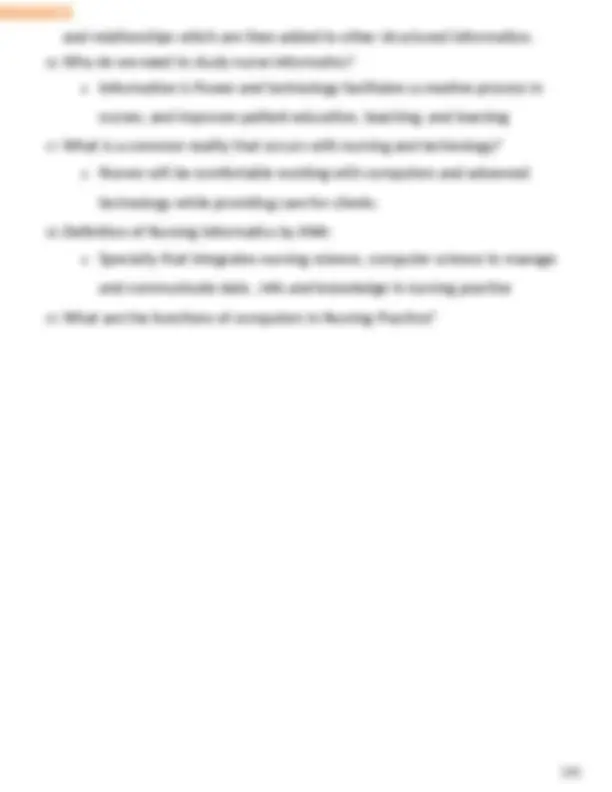
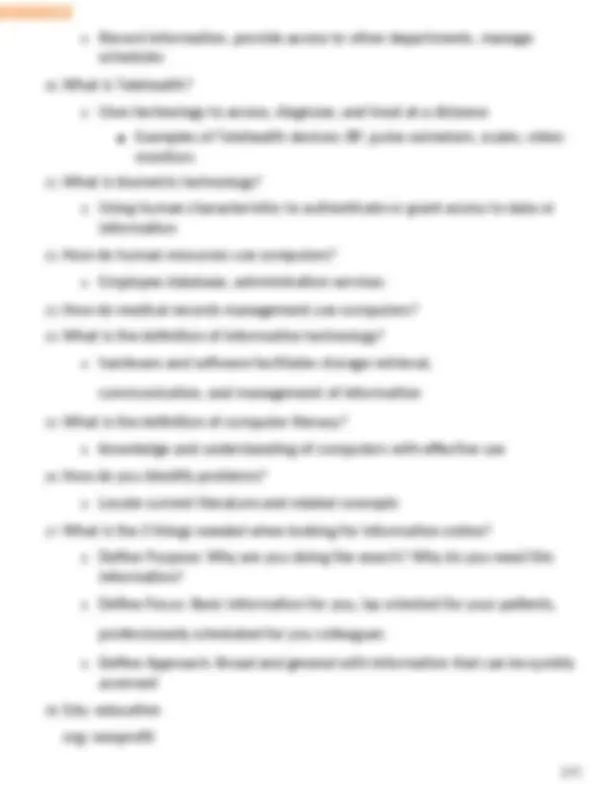
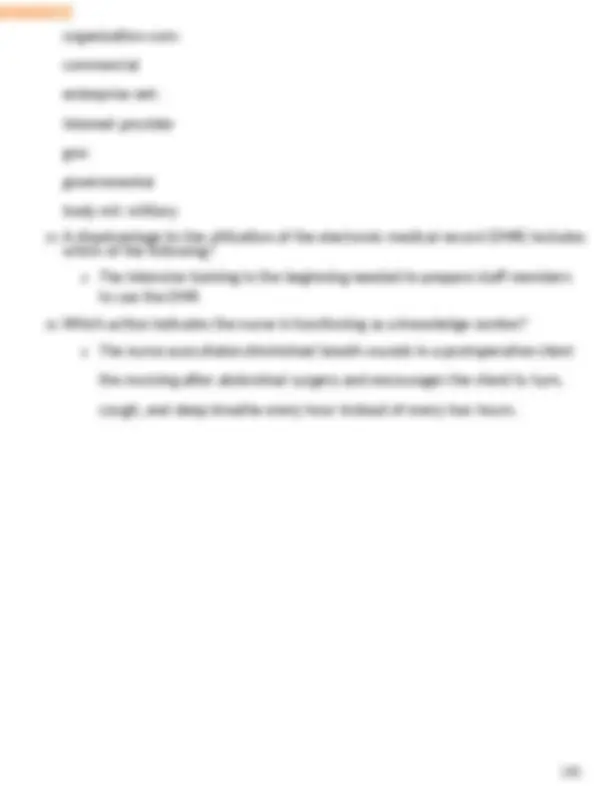
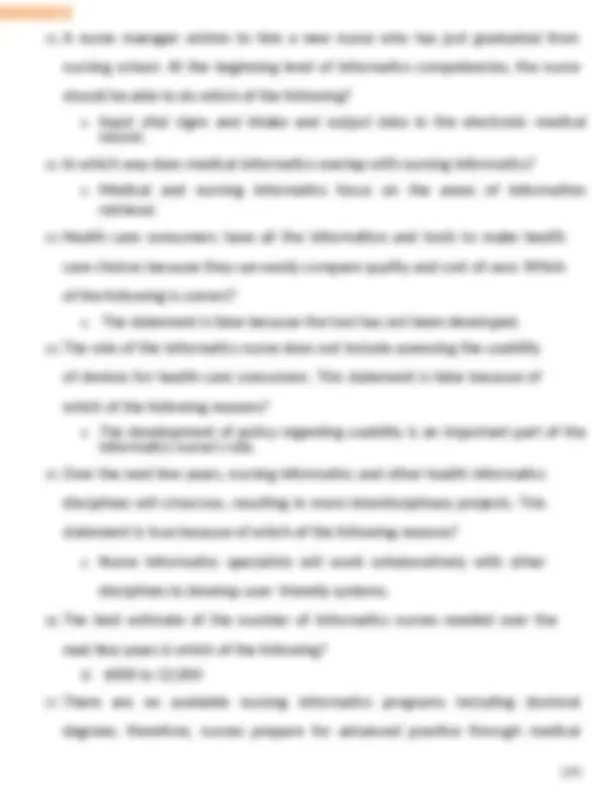
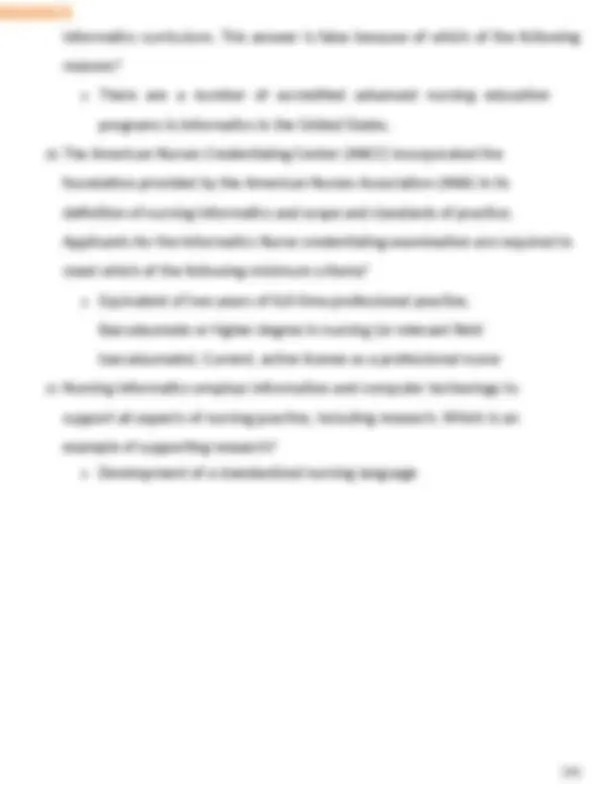
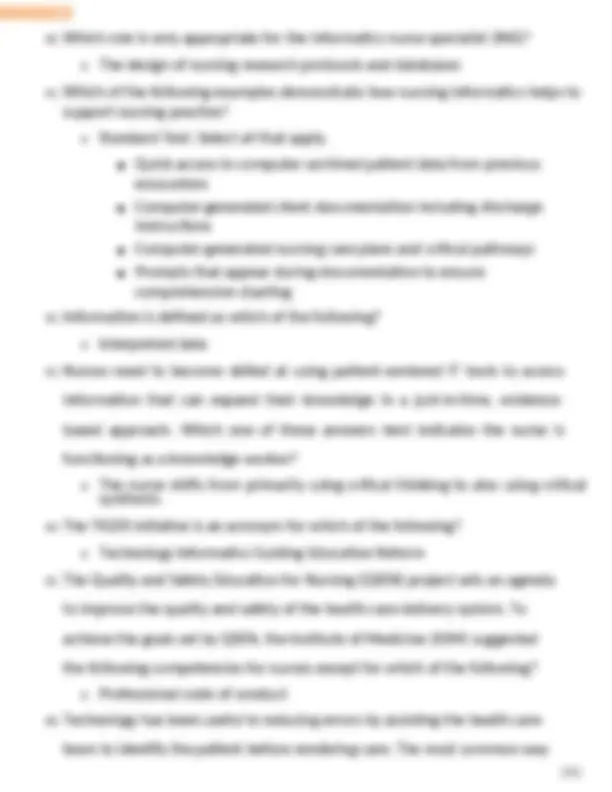
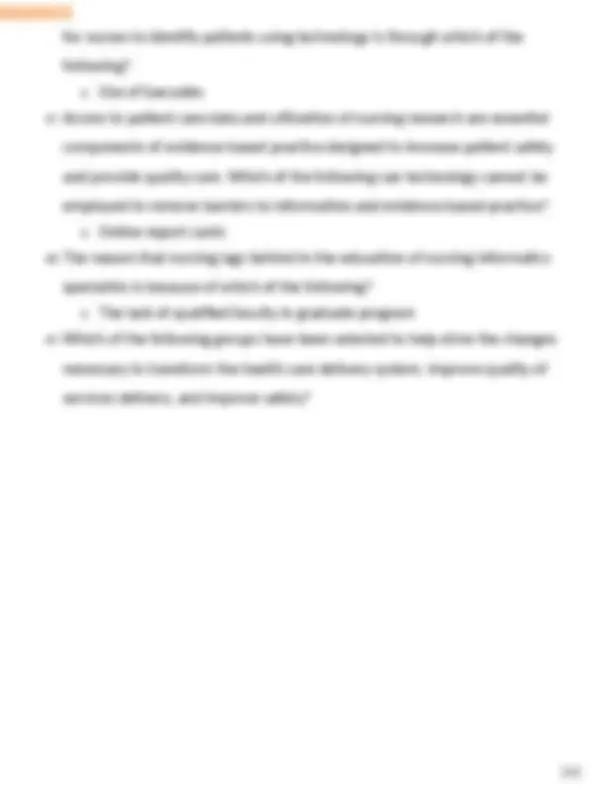
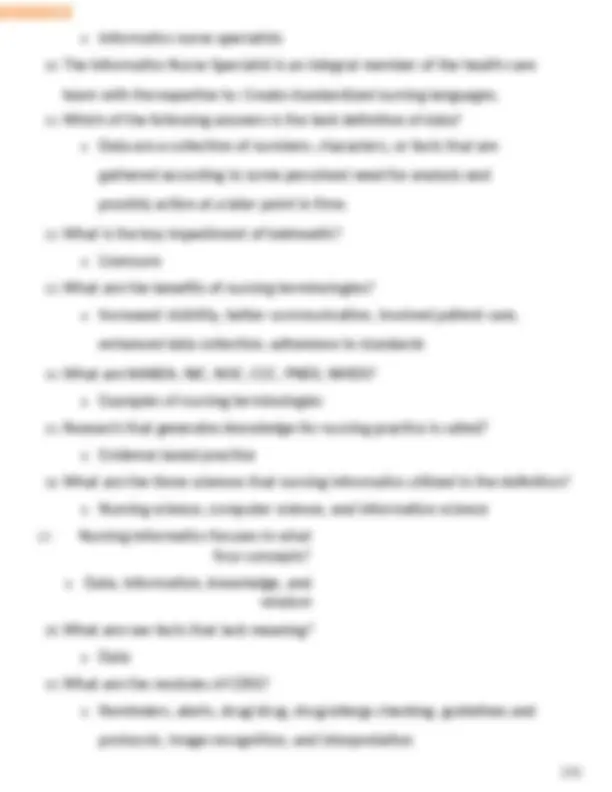
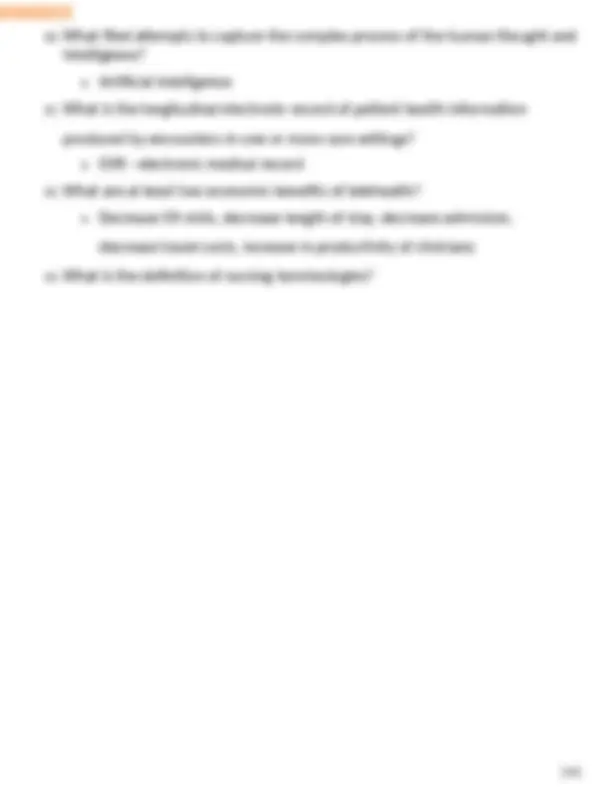
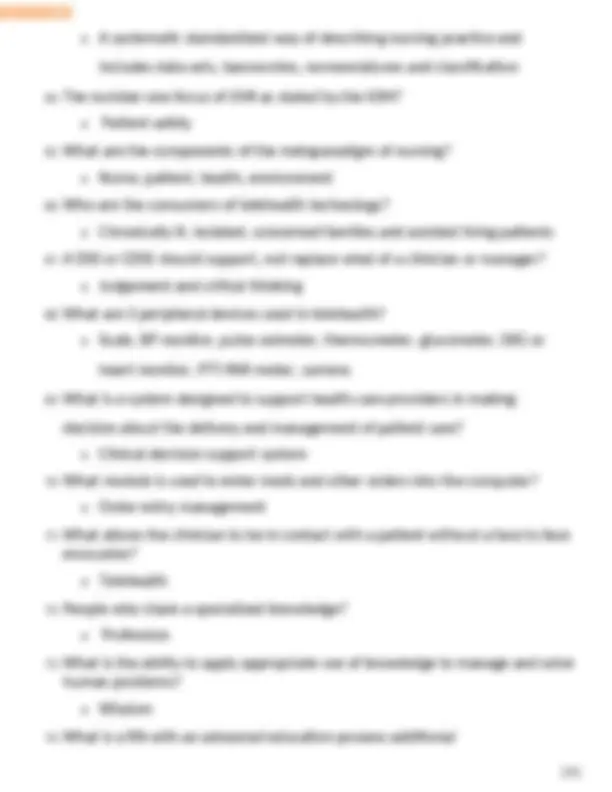
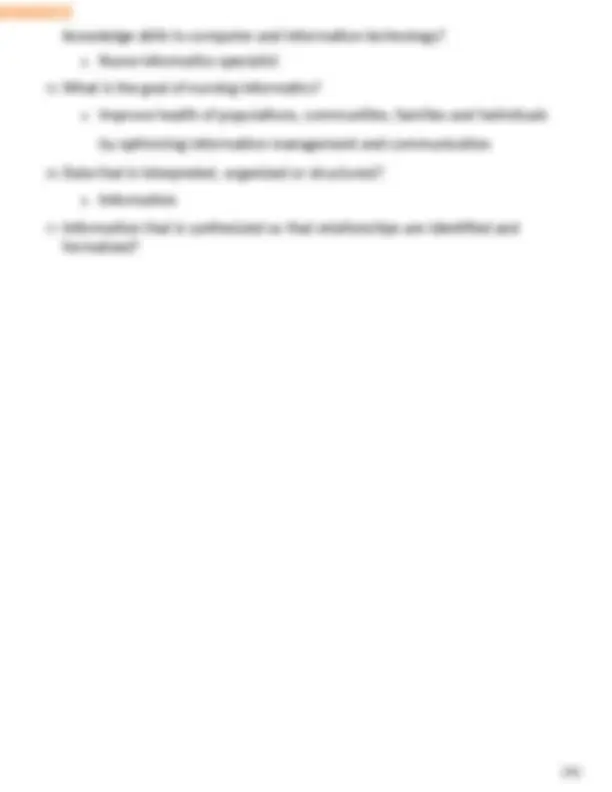
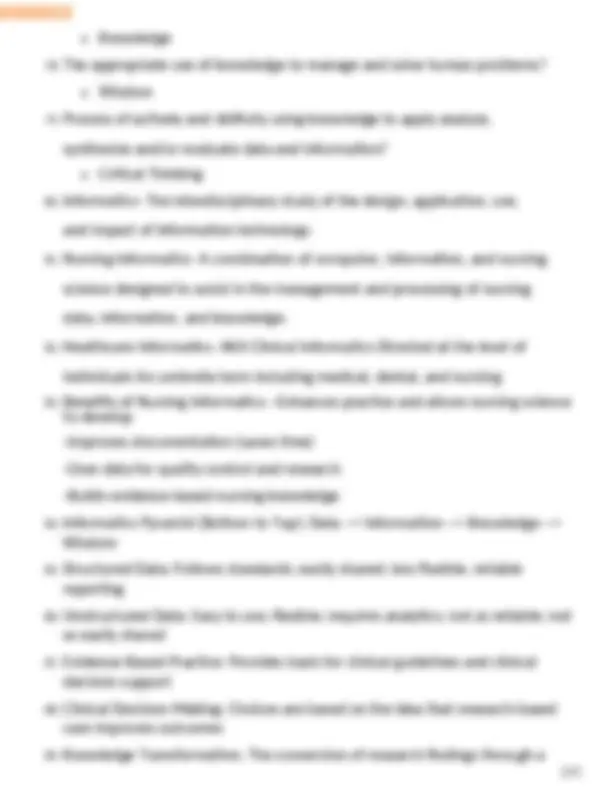
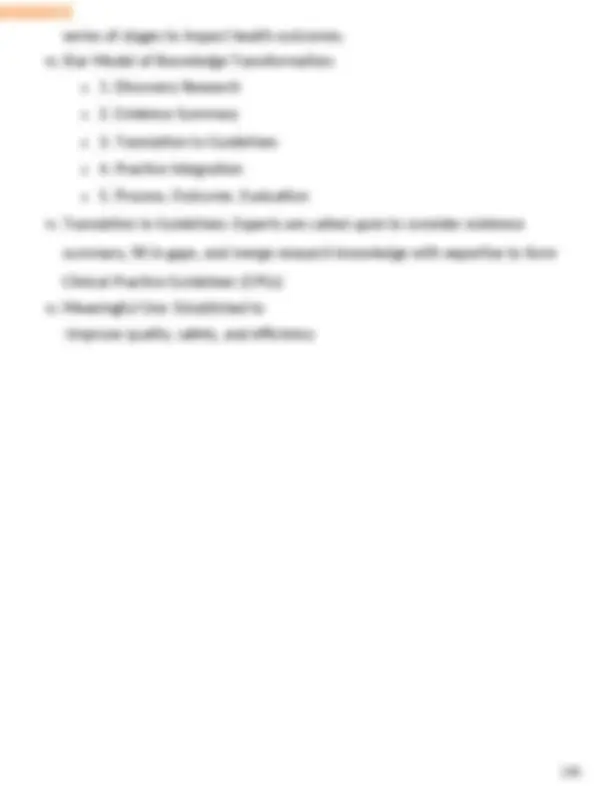
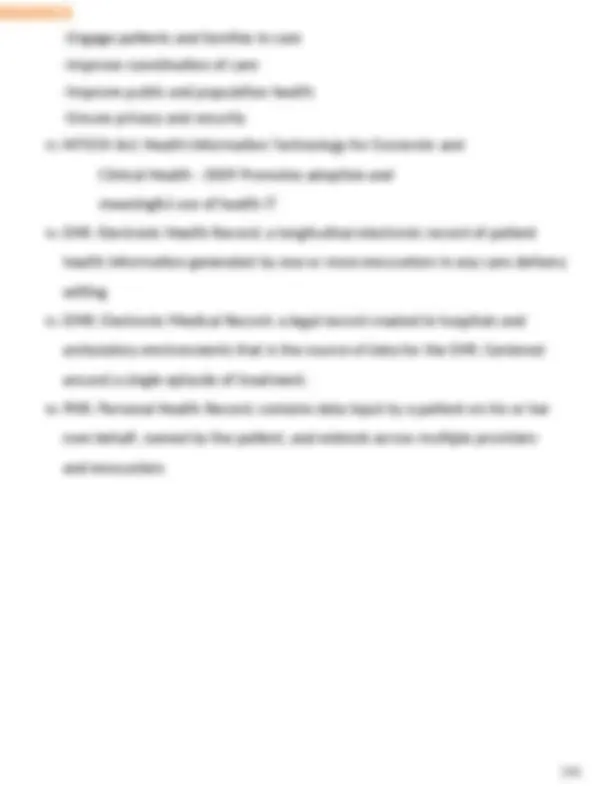


Study with the several resources on Docsity

Earn points by helping other students or get them with a premium plan


Prepare for your exams
Study with the several resources on Docsity

Earn points to download
Earn points by helping other students or get them with a premium plan
Community
Ask the community for help and clear up your study doubts
Discover the best universities in your country according to Docsity users
Free resources
Download our free guides on studying techniques, anxiety management strategies, and thesis advice from Docsity tutors
An overview of the importance of health information systems in clinical practice and the role of nursing informatics in integrating nursing science with information and analytical sciences. It also covers the Foundation of Knowledge Model, computer science, cognitive science, and information science. informatics competencies, health literacy, meaningful use, electronic health records, and the human-technology interface in nursing.
Typology: Exams
1 / 39

This page cannot be seen from the preview
Don't miss anything!
































General principles of Nursing Informatics
- Verbalize the importance of health information systems with clinical practice. - Have knowledge of types and clinical and administrative uses of health information systems. - Ensure confidentiality of protected patient health information. - Assure access control in the use of health information systems. - Informatics: Science and art of turning data into info. - Nursing Informatics ANS: The specialty that integrates nursing science with multiple information and analytical sciences to identify, define, manage, and communicate data, information, knowledge, and wisdom in nursing practice. o Nursing Informatics supports nurses, consumers, patients, the inter- professional healthcare team, and all other stakeholders in their decision making in all roles and settings to achieve desired outcomes. o 2 Levels NI practice: generalists and informatics-nurse specialists. Knowledge
can act.
- Ability to apply viable and valuable knowledge, experience, understanding, and insight while being prudent and sensible. - Appropriate use of knowledge to solve human problems. Scientific Underpinning - The scientific underpinnings of practice provide the basis of knowledge for advanced nursing practice. - These scientific underpinnings include sciences such as biology, physiology, psychology, ethics, and nursing. - The sciences underpinning nursing informatics: Nursing science, information science, and computer science
- Enables the processing of information. - Links people and technology - Impacts information interfaces, influencing how people interact with information and subsequently develop and use knowledge. Standard Terminology (Week 1)
o Ability to identify when information is needed as well as the skills to find, evaluate, and effectively use the same o Evaluation of online resources for quality o Able to search literature databases effectively
o Stage 1: baseline for electronic data capture and info sharing o Stage 2 & 3 continues to expand on this baseline and be developed through future rule making. Patient-centered Information Systems
- EMRs, aggregate information systems, patient unique identifiers. - Aggregated data are used for the generation of routine reports and indicators, and for strategic planning and guidance within the health system. - Focused on collecting data and disseminating info related to direct care. - Most commonly types found in healthcare organizations: o Clinical documentation systems o Pharmacy info systems o Laboratory info systems o Radiology info systems. Clinical Decision Support Systems (CDS) - Provides clinicians, staff, patients or other individuals with knowledge and person-specific information, intelligently filtered or presented at appropriate times, to enhance health and health care. - CDS encompasses a variety of tools to enhance decision-making in the clinical workflow. o These tools include computerized alerts and reminders to care providers and patients; clinical guidelines; condition-specific order sets; focused patient data reports and summaries; documentation templates; diagnostic support, and contextually relevant reference information, among other tools. - Provides HIT functionality that builds upon the foundation of an EHR to provide
persons involved in care processes with general and person-specific information, intelligently filtered and organized, at appropriate times, to enhance health and health care
- Promotes accurate medical diagnoses and suggest appropriate medical and nursing interventions based on patient data. Electronic Medical Records - Electronic version of a patient’s medical history, that is maintained by the provider over time, and may include all of the key administrative clinical data relevant to that persons care under a particular provider, including demographics, progress notes, problems, medications, vital signs, past medical history, immunizations, laboratory data and radiology report
become a necessity. Such technology has been already practiced in many nursing departments. o For example, the cardiac monitoring systems, defibrillators, electronic thermometers, intravenous pumps, Patient-controlled analgesia (PCA) pumps and many others hardware.
- May present information using text, numbers, images, icons or sound. o Auditory, visual, or even tactile alarms may alert users to important information.
- Comprised of “hardware, software, integrated technologies or related licenses, intellectual property, upgrade, or packaged solutions sold as services that are designed for or support the use by healthcare entities or patients for the electronic creation, maintenance, access or exchange of health information. - Involves the exchange of health information in an electronic environment. Widespread use of health IT within the health care industry will improve the quality of health care, prevent medical errors, reduce health care costs, increase administrative efficiencies, decrease paperwork, and expand access to affordable health care. - It is imperative that the privacy and security of electronic health information be ensured as this information is maintained and transmitted electronically. Alarm fatigue (Week 2) - Multiple false alarms by smart technology that cause workers to ignore or respond slowly to them. - the desensitization of a clinician to an alarm stimulus that results from sensory overload causing the response of an alarm to be delayed or missed According to The Joint Commission (TJC) between 2009 and 2012, there were reports of 98 alarm-related sentinel events, in which 80 resulted in death, 13 in permanent loss of function, and five in unexpected prolonged care conditions Digital natives - Person born or brought up during the age of digital technology and therefore familiar with computers and the Internet from an early age.
o provide administration and curriculum committees a shared understanding of student competencies and need; and o provide a framework for continuing education in the area of information literacy for the field of nursing practice and research
o Summarizes the main ideas to be extracted from the information gathered. o Selects information by articulating and applying criteria for evaluating both the in-formation and its sources. o Synthesizes main ideas to construct new^ concepts. o Compares new knowledge with prior knowledge to determine the value added, contradictions,^ or^ other unique characteristics of the information. o Validates understanding and interpretation of the information through discourse with other individuals, subject-area experts, and/or practitioners o Determines whether the initial query should be revised. o Evaluates the procured information and the entire process.